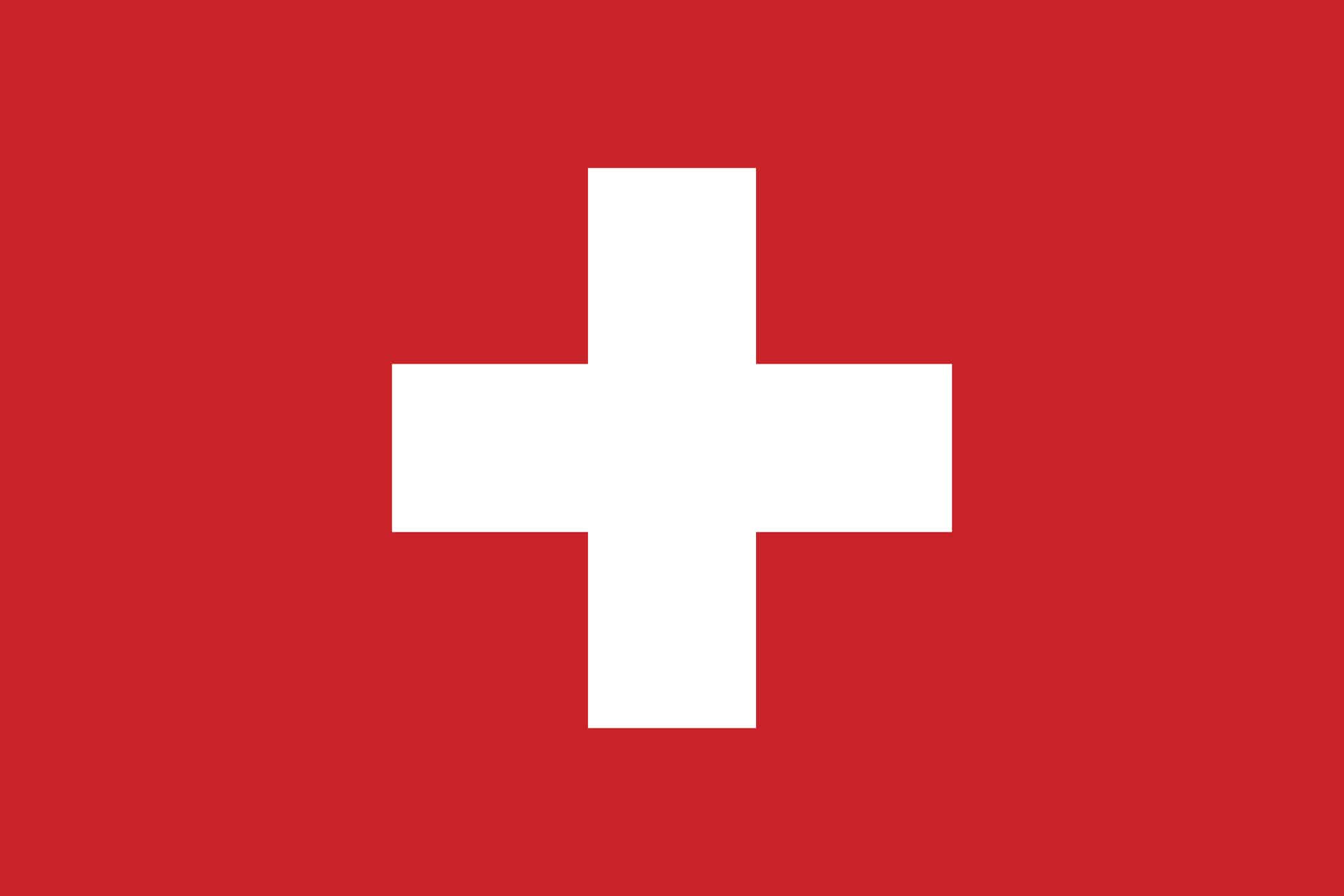Switzerland is known for being a lot of things, especially its neutrality. In fact, the country is so well associated with neutrality that they’ve become a sort of slang word to say that someone isn’t a part of something ie, “Hey, I’m Switzerland here”. Their political stances are so ubiquitous that there may only be one thing about Switzerland that’s more famous: its flag! Today, we are going to learn a bit about their flag, including its history, meaning, and symbolism. Let’s get started!

The flag of Switzerland is one of the most easily recognized flags today.
©iStock.com/extravagantni
The Flag of Switzerland: What Does It Look Like Today?
Of all the world’s flags, Switzerland is easily one of the most recognizable, and clearly one of the most beautiful. In its current state, the Swiss flag is a “pure red” color with a perfectly proportioned white cross in the middle. This icon is seen on everything from Swiss Army Knives (Victorinox) to wristwatches (Wenger and Hanowa). Importantly, the national flag is a perfect square (1:1), while the civil and state ensigns are the more common rectangular shape of a flag (2:3). This distinction makes Switzerland the only nation in the world to have a square national flag.
The proportions of the white cross have been the same since 1889, although the exact size of the cross on the background is a bit variable. There are a few ratios of white space to red space, including 20:32, 20:28, 20:26, 2:3, and 3:5 ratios.

The Swiss flag is a pure red color with a perfectly proportioned white cross in the middle.
©kavalenkava/Shutterstock.com
The Flag of Switzerland: History
The flag of Switzerland has a long, albeit a bit unclear, history. Like many other European countries, the flag and its elements evolved over time in a Christian medieval context.
The White Cross
The first uses of a white cross on a flag have three potential origins, all three of which are legendary in nature. The Theban Legion, the Reichssturmfahne, and the Arma Christi all vie to be the first, although no clear “first” has been decided. The Theban Legion, also known as the Martyrs of Aguanum, are famous (and likely fictional) Christian martyrs who converted en masse to Christianity, only to be martyred soon after. Their banner included a cross. The Reichssturmfahne, otherwise known as the Imperial War Banner, was the banner used by the Emperor of the Holy Roman Empire. The Reichssturmfahne is today known as a black and gold banner, but some earliest attestations have it as a red flag with a white cross. Finally, the Arma Christi, or the Instruments of the Passion, were well-regarded and displayed as a part of ancient heraldry, especially in the cantons (tribes or factions) that made up the area we now refer to as Switzerland.
The Field Mark on the Red Background
The region that makes up modern-day Switzerland can be broken into 26 cantons, generally known as the cantons of Switzerland. Each canton is considered a member state of the Swiss Confederation. In the middle ages, these cantons (originally eight) would often add a white cross to their individual banners for identification. At the time, one of the cantons, the Schwyz, was a solid red war flag. As they began placing the field sign (the white cross) on these flags, the development of the modern Swiss flag begins to be a bit clearer.
The French Invasion
During the Napoleonic Wars, French forces invaded Switzerland, overthrowing the Confederation and establishing the Helvetic Republic. After confiscating all flags in the country, French soldiers replaced them with the Schweizerfahne, or a flammé flag with a white regimental cross.
After the invasion and eventual collapse of the Helvetic Republic, the Swiss Diet (the existing government of the Old Swiss Confederacy) reintroduced the white cross on a red field for the official seal of the Confederacy in 1814. After the formation of the federal state in 1848 was established and the flag was recognized by the Federal Council in 1889, it became something of a national flag, although true national flags weren’t often described at the time. Instead of a national flag, the Swiss constitution of 1848 established it as a federal flag that was intended for use by the federal troops, specifically.

During the Napoleonic Wars, French forces invaded Switzerland, overthrew the Confederation and confiscated all flags in the country.
©helloRuby/Shutterstock.com
The Modern Swiss Flag
Although the Swiss constitution of 1848 established a federal flag for all troops, it didn’t exactly establish an official national flag. Through the 19th and early 20th centuries, different laws were passed attempting to outline the Swiss flag and its specifications. Some rulings included adding a heraldic shield, while others intentionally left certain elements undefined in order to conform to the “tastes of the current time and practical necessity”. Additionally, this period defined the ratios used for the flag (particularly the 7:6 ratio), saying:
“our heraldic cross is not a mathematical figure, but at the same the Christian cross symbol and the field sign of the Old Confederacy”
Botschaft
The current laws surrounding the Swiss flag were most recently outlined in 2013 in the Wappenschutzgesetz (The Coat of Arms Protection Act). This act defined both the national flag, as well as the Swiss coat of arms in a complete text. These laws, signed in 2013 and enforced in 2017, give us the flag and coat of arms that we recognize today!
Click here to learn about every single flag in the world!
Up Next
Thank you for reading! Have some feedback for us? Contact the AZ Animals editorial team.








